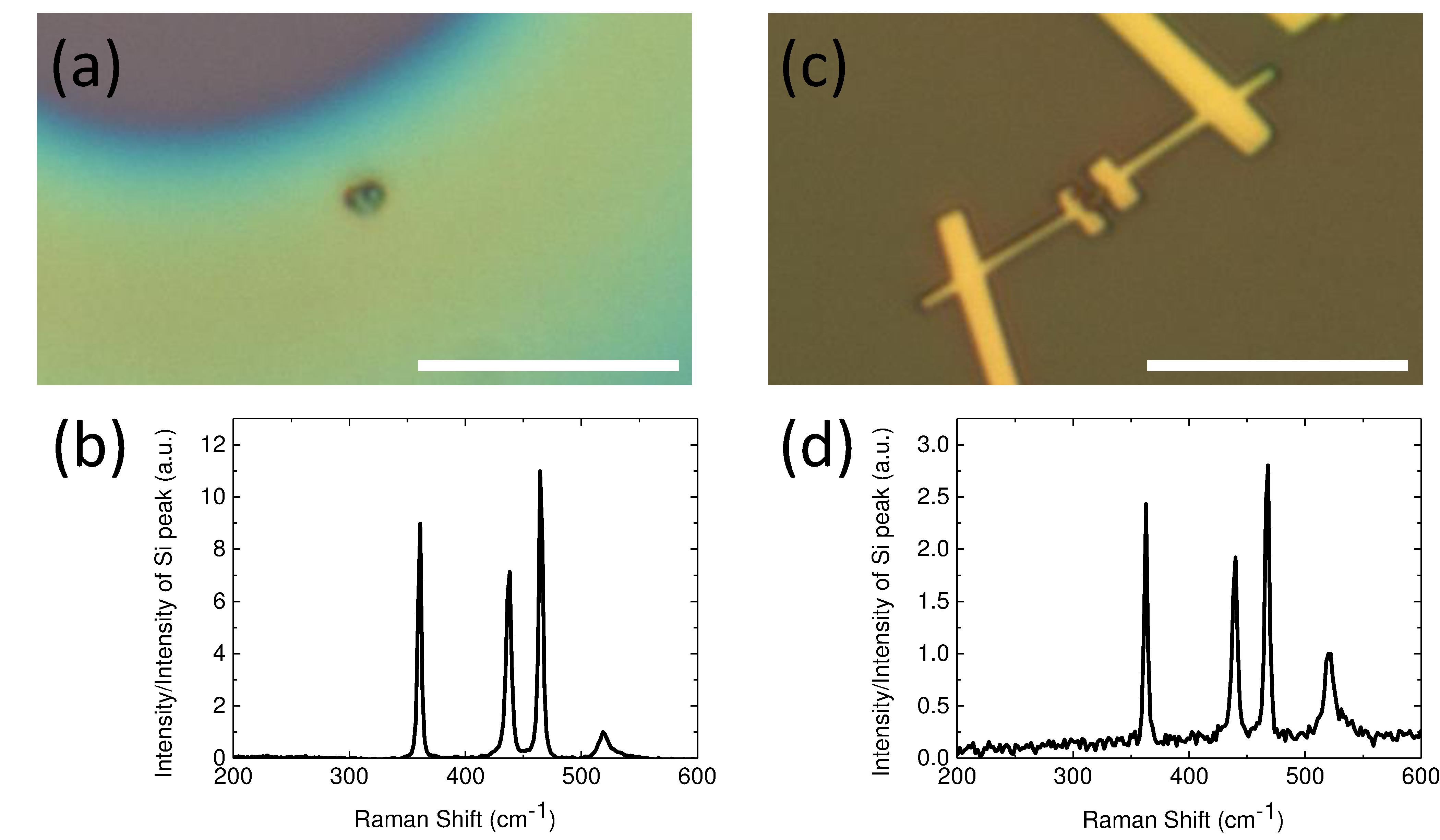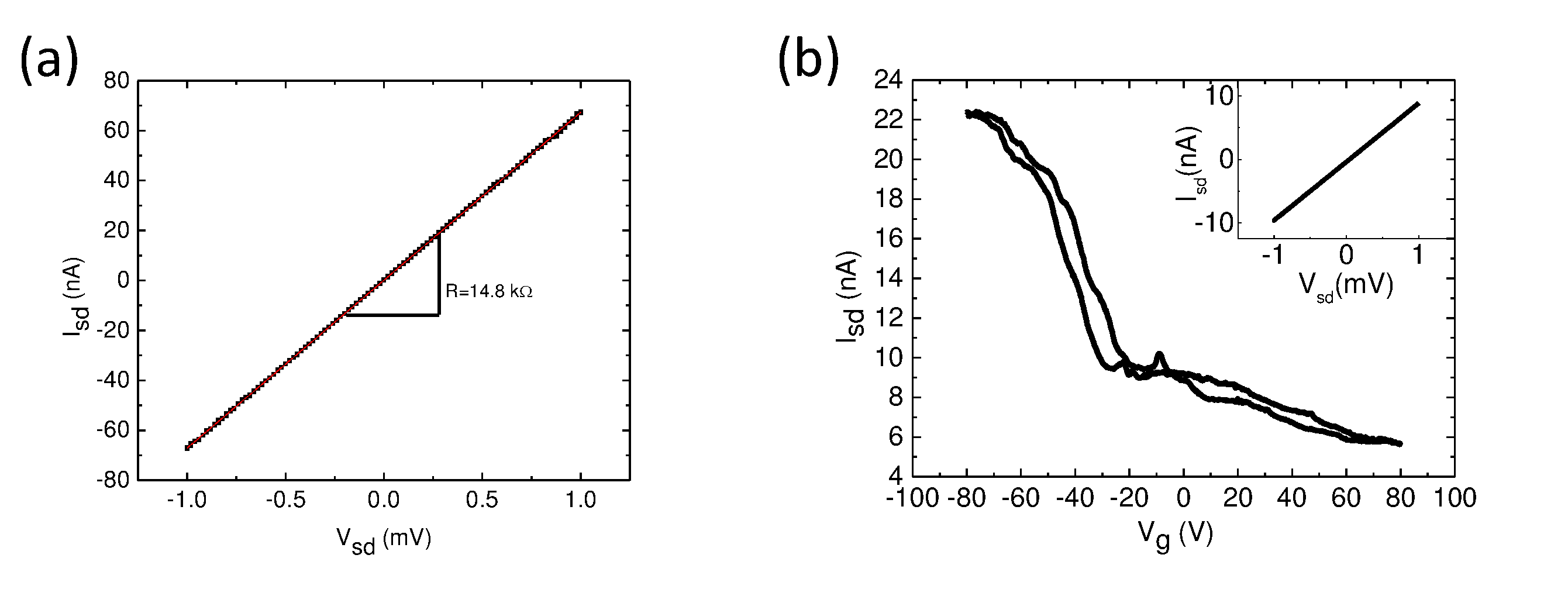Hybrid 2D black phosphorus/polymer materials: new platforms for device fabrication
Hybrid materials, where a 2D filler is embedded in a polymeric matrix, attracted great interest in past years, because of the wide variety of matrix and filler properties and combinations, the possibility of synergic effect among them, and the easy accessibility to scalable production methodologies. Mostly, the bulk properties of these materials have been studied so far, especially looking at how the filler changes the matrix properties. Here we propose a change in perspective, by using the hybrid material as a platform to exploit the full potential of the filler regarding device applications. In particular, we show results where black phosphorus (bP) flakes are embedded in a poly (methyl methacrylate) matrix. Black phosphorus is a very interesting layered material, thanks to its properties such as in-plane anisotropy of optical and transport properties as well as direct band gap tuneable with layer number. The application of bP has so far been severely limited by its high sensitivity to oxygen, moisture, and light, which increases going from bulk material to thin flakes. We present a low cost scalable method, which involves exfoliation of bulk bP in the monomer and in situ polymerization, and which allows to obtain electronic-grade bP nanoflakes, embedded in a polymeric matrix that protects them from the environment and allows their processing into devices without degradation.

Figure 1:Optical microscopy and Raman spectroscopy performed on a bP nanosheet before [(a),(b)] and after [(c),(d)] device fabrication. The scale bar in the optical microscopy images is 10 um. The optical microscopy images were acquired with the same set-up as the Raman measurements, and the center of the image corresponds to the laser spot position for the Raman measurement.
We propose a new paradigm for hybrid 2D/polymer materials, focused on choosing the right polymer to exploit the properties of the 2D material at its best. We applied this approach to the preparation of a PMMA/bP nanocomposite. In Fig. 1, we show that few-layer black phosphorus devices can be prepared from this multifunctional PMMA/bP hybrid material without the need for a glove box or any other kind of protective atmosphere, since the few-layer black phosphorus is exfoliated in MMA, which also efficiently acts as a protective coating. Figure 1 also shows that few-layer bP survived the polymerization process of MMA without degrading. This demonstrates that the PMMA/bP nanocomposite is a suitable platform for device applications, since PMMA may be directly used as a resist for electron beam lithography. In fact, we used standard fabrication techniques to implement this simple device. Figure 2 shows a resistivity and carrier mobility characteristic of black phosphorus, as well as the expected p-type behaviour upon gate voltage modulation. We anticipate that the carrier mobility of such devices can be further improved by optimizing sonication parameters.

Figure 2:Transport properties of the two-terminal device shown in Fig. 1 (c), prepared from PMMA/bP nanocomposite. (a) Current versus voltage characteristics of the device at room temperature. (b) Low temperature measurements (4.2 K). Source-drain current as a function of gate voltage for Vsd = 1 mV. The extracted mobility value is 35 cm2 / Vs. Isd – Vsd curve shown in the inset.
In summary, we have shown that the method described constitutes a simple, low cost approach to handle sensitive 2D materials such as few-layer black phosphorus. Beyond that, the proposed approach can provide a series of innovative platforms by varying the 2D material and/or the embedding polymer, which can be tuned to provide other functionalities to the final composite.
Publications:
- E. Passaglia, F. Cicogna, F. Costantino, S. Coiai, S. Legnaioli, G. Lorenzetti, S. Borsacchi, M. Geppi, F. Telesio, S. Heun, A. Ienco, M. Serrano-Ruiz, and M. Peruzzini: Polymer-based black Phosphorus (bP) hybrid materials by in situ radical polymerization: an effective tool to exfoliate bP and stabilize bP nanoflakes, arXiv:1804.03907 [cond-mat.mes-hall].
- E. Passaglia, F. Cicogna, F. Costantino, S. Coiai, S. Legnaioli, G. Lorenzetti, S. Borsacchi, M. Geppi, F. Telesio, S. Heun, A. Ienco, M. Serrano-Ruiz, and M. Peruzzini: Polymer-based black Phosphorus (bP) hybrid materials by in situ radical polymerization: an effective tool to exfoliate bP and stabilize bP nanoflakes, Chem. Mater. 30 (2018) 2036 – 2048.
- Francesca Telesio, Elisa Passaglia, Francesca Cicogna, Federica Costantino, Manuel Serrano-Ruiz, Maurizio Peruzzini, Stefan Heun: Hybrid 2D Black Phosphorus/Polymer Materials: New Platforms for Device Fabrication, arXiv:1802.01103 [cond-mat.mtrl-sci].
- F. Telesio, E. Passaglia, F. Cicogna, F. Costantino, M. Serrano-Ruiz, M. Peruzzini, and S. Heun: Hybrid nanocomposites of 2D black phosphorus nanosheets encapsulated in PMMA polymer material: new platforms for advanced device fabrication, Nanotechnology 29 (2018) 295601.
Presented at:
- S. Heun: Optimization of few-layer black phosphorus for low-temperature magneto-transport studies, Iconsat 2018, Bangalore, India, 21 – 23 March 2018 (invited). [Abstract] [Talk]
- S. Heun: Optimization of few-layer black phosphorus for low-temperature magneto-transport studies, AGH University of Science and Technology, Krakow, Poland (Prof. B. Szafran), 12 June 2018 (invited). [Abstract] [Talk]
- Francesca Telesio, Elisa Passaglia, Francesca Cicogna, Federica Costantino, Manuel Serrano-Ruiz, Maurizio Peruzzini, and Stefan Heun: Hybrid 2D black phosphorus/polymer materials: new platforms for device fabrication, E-MRS Spring Meeting 2018, Strasbourg, France, June 18 – 22, 2018 (oral). [Abstract] [Talk]
- S. Heun: Optimization of few-layer black phosphorus for low-temperature magneto-transport studies, École Polytechnique de Montréal, Quebec, Canada (Prof. O. Moutanabbir), 13 September 2018 (invited). [Abstract] [Talk]
- Elisa Passaglia, Francesca Cicogna, Serena Coiai, Federica Costantino, Giulia Lorenzetti, Stefano Legnaioli, Silvia Borsacchi, Marco Geppi, Francesca Telesio, Stefan Heun, Andrea Ienco, Manuel Serrano-Ruiz, Maria Caporali, Maurizio Peruzzini: In situ polymerization approach to hybrid 2D black phosphorus/polymer materials: a novel strategy for optoelectronic device fabrication, Materials.it 2018, Bologna, Italy, 22 – 26 October 2018 (oral). [Abstract] [Talk]
- S. Heun: Optimization of few-layer black phosphorus for low-temperature magneto-transport studies, Materials.it 2018, Bologna, Italy, 22 – 26 October 2018 (invited). [Abstract] [Talk]
- Elisa Passaglia, Francesca Cicogna, Serena Coiai, Doriana Scittarelli, Simone Pinna, Giulia Lorenzetti, Stefano Legnaioli, Silvia Borsacchi, Marco Geppi, Francesca Telesio, Stefan Heun, Andrea Ienco, Manuel Serrano-Ruiz, Maria Caporali, Maurizio Peruzzini: Polymer Blending And In Situ Polymerization Approaches For 2D Black Phosphorus Polymeric Materials, Conferenza 2019 del Dipartimento DSCTM del CNR, Bressanone, Italy, 28 – 30 October 2019 (poster). [Abstract] [Poster]
- S. Heun: Surface Engineering of two-dimensional black Phosphorus, Israel-Italy Workshop on 2D Materials, Bar-Ilan University, Israel, 25 – 27 November 2019 (invited). [Program] [Abstract] [Talk]